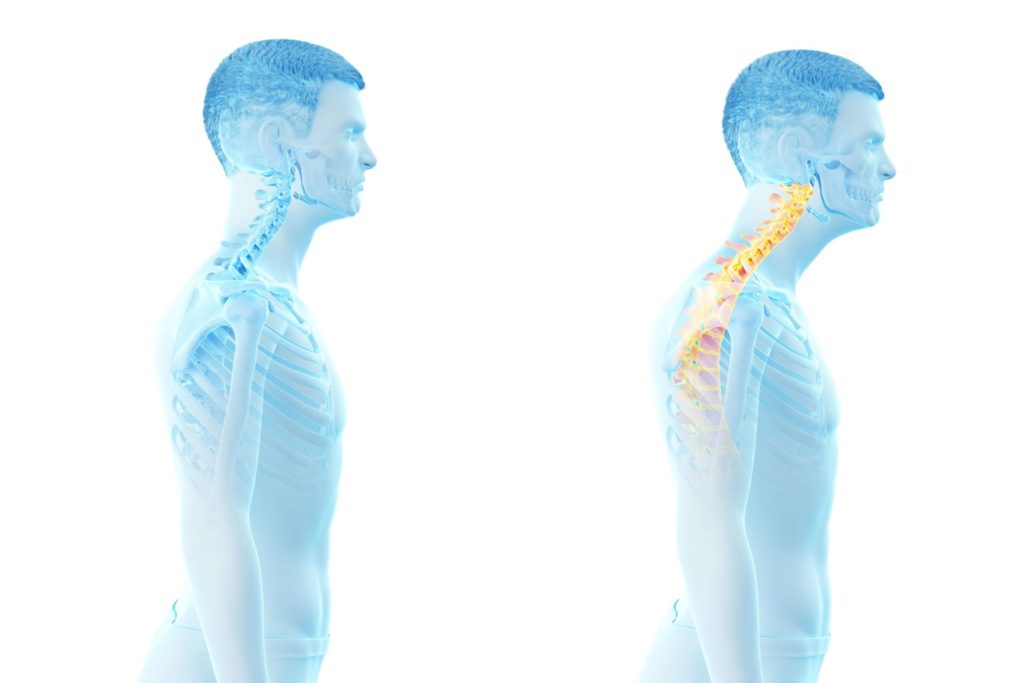Forward head posture is not widely talked about, but it is not uncommon. In fact, it is estimated that about two thirds of the population may have it.
Not sure what forward head posture is? As the name suggests, it is when the head is leaning forward, instead of being properly aligned with the spine. The further your head slants forward, the more weight your body is working to support.

What Causes Forward Head Posture?
As we become more involved with our technology, forward head posture has become common in all ages. The longer we stare at our phone and computer screens, the more damage we are doing to our posture. In other words, the more time we spend looking down, the more likely we are to have it.
Other causes can include prior neck injuries, playing sports that favor one side of the body, and carrying too much on your back, such as a backpack.
Because forward head posture is so prevalent, it’s likely that you or someone you love suffers from it. Keep reading to find out how you can identify and address it.
What are the Symptoms of Forward Head Posture?
When you are carrying extra weight on your shoulders due to your head being tilted forward, issues start at the top and work their way down. Your body is working harder to support the weight of your head, which causes neck, back hip, and knee pain.
When the head is not where it naturally should be, it will cause everything underneath to move around to try and create balance. A common symptom found is that a shoulder or hip will sit higher, due to the body curving to support the weight of your head and create open airways.
Another problem that stems from having our heads too far forward is constricted airflow through the throat. One of the easiest ways to visualize this is by imagining two empty toilet paper tubes. The first is in good shape, and the second one is slightly squeezed together at one point. On the first one, things can move freely through the tube, while the second has restricted flow. If you have forward head posture, your throat is functioning more like the second toilet paper tube.
Results of this impacted airway can include trouble digesting, breathing, and sleeping. It is common for those struggling with sleep apnea to also have Forward Head Posture. This is due to continuing breathing difficulties while sleeping.
If you go long enough living with all of the symptoms of forward head posture without correction, it could end up causing TMJ. When the head is not in the proper alignment, it can interrupt the muscle alignment in your jaw.
How Should You Address Your Symptoms?
The good news is that it is not too late to start fixing your forward head posture. Treatment doesn’t have to be intimidating. After your consultation, treatment plans may also include visiting a chiropractor for adjustments, or a physical therapist to work on strengthening muscles in the shoulders and neck.
It is important to get a consultation as soon as you think you are having these symptoms. When we work on getting it corrected sooner, you will suffer fewer symptoms down the road.
Set up a free cure consultation to learn more about this issue and your treatment options.
